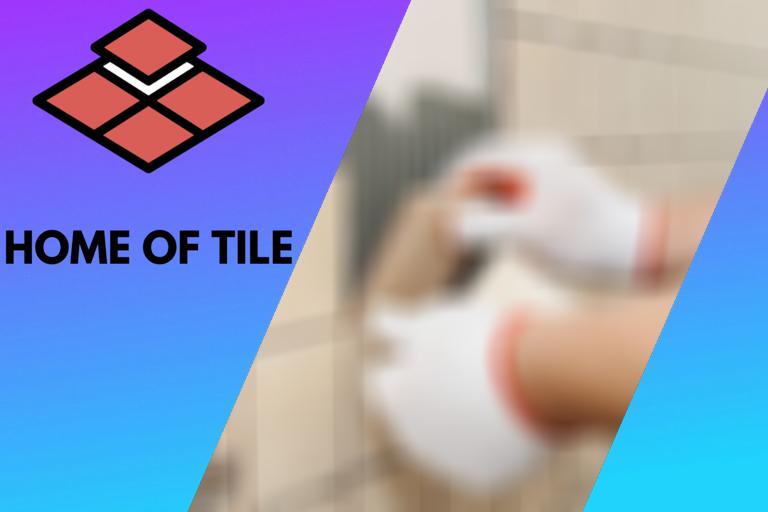How to Choose the Right Adhesive for Tiling Over Tiles
Are you considering a bathroom or kitchen renovation but dreading the mess and hassle of removing existing tiles? Save yourself the headache by tiling over them! But what is the best adhesive to ensure a flawless, long-lasting result?
What is the best adhesive for tiling over tiles:
Tiling over existing tiles is a practical and time-saving solution for updating spaces, but choosing the right adhesive is crucial for success. Cement-based adhesives are generally versatile, durable, and recommended for most projects, while ready-mixed adhesives are ideal for smaller jobs where convenience is essential.
Proper surface preparation, checking compatibility with tile materials, using the correct trowel, and adhering to the manufacturer’s recommendations for adhesive curing times can ensure a long-lasting and impressive result.

Discover the top adhesive options for tiling over existing tiles and expert advice on selecting the right product for your project. Learn about their properties, application methods, and potential drawbacks to ensure a successful tile makeover. Keep reading to become an informed DIY enthusiast.
Contents
- 1 What is the Most Effective Adhesive for Installing Tiles Over Existing Tiles?
- 2 What is the Most Effective Thinset for Tile Installation Over Existing Tiles?
- 3 What is the Proper Method for Adhering Tiles Over Existing Tiles?
- 4 Is it a Good Idea to Install Tiles Over Existing Tiles?”: A Professional Perspective
- 5 Is it Possible to Adhere Tiles on Top of Existing Tiles?
What is the Most Effective Adhesive for Installing Tiles Over Existing Tiles?
Tiling over existing tiles is a practical solution for updating a space without the hassle of removing old tiles. This method saves time and effort and can reduce the amount of waste generated during renovation projects.
However, you must select the right adhesive to achieve good results. I will discuss various types of adhesives, their suitability for tiling over tiles, and tips and tricks for a successful installation.
• Types of Adhesives for Tiling Over Tiles
Several varieties of adhesives on the market are specifically designed for tiling over tiles. Each has its advantages and limitations, making it crucial to understand your options to choose the best adhesive for your project.
– Cement-Based Adhesives
Cement-based adhesives, or thin-set mortars, are widely used and recommended for tiling over tiles. These adhesives contain cement, sand, and various polymers that promote flexibility and bonding strength.
Pros:
- Suitable for both indoor and outdoor applications
- Works well with various types of tiles and substrates
- Long-lasting and resistant to moisture and temperature changes
Cons:
- Requires mixing with water before use, which can be time-consuming
- Needs to be applied quickly, as it can set rapidly
- Can be difficult to adjust the tile position once it set
I recommend cement-based adhesives for most tiling over tiles projects due to their versatility, durability, and compatibility with many existing tiles.
– Ready-Mixed Adhesives
Ready-mixed adhesives, such as mastic, are pre-blended and come in a tub, offering convenience and easy handling. These adhesives are ideal for small-scale projects or when working in tight spaces.
Pros:
- No mixing is required, it saves time and effort
- Easy to apply and adjust tile position
- Suitable for vertical surfaces, as they have a better hold
Cons:
- Not recommended for heavy or large-format tiles, as they lack the necessary strength
- Can be more expensive than cement-based adhesives
- Limited resistance to moisture and temperature changes
I recommend using ready-mixed adhesives for smaller projects, such as tiling over kitchen or bathroom splashbacks, where convenience and ease of use are essential.
• Surface Preparation Tips for Tiling Over Tiles
Before applying an adhesive, it’s important to properly prepare the existing tile surface to ensure optimal bonding and a successful outcome.
- Clean the surface: Remove dirt, dust, grime, and grease from the existing tiles using a dedicated tile cleaner or degreasing solution.
- Check for loose tiles: Inspect the surface for any loose or damaged tiles and repair or replace them as necessary. Loose tiles can compromise the integrity of the new layer, leading to potential failure in the future.
- Roughen the surface: If the existing tiles are glossy or glazed, creating a rougher surface for the adhesive to bond is essential. Use a handheld tile-scratching tool or coarse sandpaper for scratching the surface, followed by cleaning away any dust generated.
- Ensure the surface is level and plumb: If the existing tile surface is not level, consider using a self-leveling compound to create a smooth, even base for the new tiles. Similarly, ensure the surface is plumb (vertically aligned), so your new tiles will be installed evenly.
• Application Tips for Adhesive Selection and Use
- Check the adhesive’s coverage rate: Each product has a recommended coverage rate, typically displayed on the packaging. This information will help you determine the adhesive required for your project. Avoid underestimating, as running out mid-project can lead to inconsistencies in bonding strength.
- Choose the right adhesive for your tiles and substrate: Check the manufacturer’s recommendations for compatibility with your project’s materials. Some adhesives may not be suitable for certain types of tiles (e.g., glass, porcelain) or substrates (e.g., plywood, concrete).
- Use the correct trowel type and size: The right trowel will help you achieve consistent adhesive thickness and proper coverage. Generally, use a notched trowel for cement-based adhesives and a smooth-edged trowel for ready-mixed bonds.
- Monitor the pot life and open time of the adhesive: Pot life refers to how long an adhesive remains workable after mixing, and open time is when an adhesive can effectively bond to the tile. Be mindful of these times when working to ensure optimal bonding and avoid adhesive failure.
- Allow proper curing time: Each adhesive type will have a recommended curing time. This is the period after which the adhesive has fully set, and the surface can be grouted and walked on. Always follow the manufacturer’s recommendation to ensure proper bonding and long-lasting results.
• Conclusion
Choosing the best adhesive for tiling over tiles is crucial to any successful renovation project. Cement-based adhesives are generally the most versatile and durable option, making them the go-to choice for most projects. However, ready-mixed adhesives have their merits, particularly for smaller-scale jobs where convenience is crucial.
Remember to properly prepare the surface, choose the right adhesive for your project, and follow best practices for adhesive application and curing times. Doing so can achieve a fantastic result that will stand the test of time.
Adhesive Type | Best for | Pros | Cons |
|---|---|---|---|
Flexible Tile Adhesive | Excellent bond strength, chemical, and water resistance | Accommodates movement, good adhesion | More expensive than traditional adhesives |
Modified Thinset Mortar | For smaller tiles or less demanding applications | Good bond strength, cost-effective | Less flexible than flexible adhesives, not ideal for larger or heavy tiles |
Epoxy-based Adhesive | For demanding environments or heavy tiles | Excellent bond strength, chemical and water resistance | Difficult to work with, expensive, long curing times |
What is the Most Effective Thinset for Tile Installation Over Existing Tiles?
When it comes to tiling projects, many homeowners and professionals face the question of which thinset to use. In particular, the choice of thinset becomes especially important when tiling over existing tile.
This guide comprehensively reviews the best thinset for tile-over-tile projects and provides expert recommendations on selecting the appropriate thinset for your specific needs.
• Understanding Thinset Mortar
Before diving into the best thinset options for tile over tile, it’s essential to understand the role of thinset mortar in tiling projects. Thinset is a blend of cement, finely graded sand, and a water-retention compound. This adhesive bonds tile to a surface, such as concrete, backer board, existing tile, or plywood.
Thinset mortar is categorized based on its polymer content. The two main types are unmodified and modified thinset, with modified thinset containing polymers that improve adhesion, flexibility, and moisture resistance.
Modified thinset is typically the better choice for tiling over existing tile due to its enhanced bonding capabilities.
• Factors to Consider for Tile Over Tile Projects
Before selecting a thinset for your tile-over-tile project, consider the following factors:
– Surface Preparation
Proper surface preparation is crucial for the success of any tiling project. The existing tile surface must be clean and free of dirt, debris, grease, and soap scum. Additionally, lightly sanding or using an etching solution may improve adhesion.
Ensure the existing tile is firmly attached to the substrate, and repair any loose or cracked tiles as needed.
– Tile Type
The type of tile you intend to install will affect the choice of thinset. Some materials, such as glass or certain types of natural stone, may require specific thinset formulations that provide better adhesion, reduced staining, or increased flexibility.
– Environmental Conditions
Consider the environmental conditions of the area where you will install the tile. High-moisture spaces such as showers, steam rooms, and exterior installations often require a thinset with enhanced moisture resistance or waterproofing properties.
• Top Thinset Choices for Tile Over Tile Projects
Below are top thinset options for tile-over-tile installations based on expert recommendations and successful projects.
1. Custom Building Products VersaBond-LFT Fortified Medium Bed Mortar
VersaBond-LFT is a polymer-modified mortar designed for large-format tile installations. This medium-bed mortar offers excellent flexibility, bond strength, and durability for tiling over existing tile surfaces. Its non-slumping formula minimizes lippage, ensuring a level and professional-looking outcome.
VersaBond-LFT is suitable for interior and exterior applications and can bond tile to various substrates.
I highly recommend VersaBond-LFT for homeowners undertaking DIY tile-over-tile projects and professional installers who require a reliable and versatile thinset.
2. Laticrete 253 Gold
Laticrete 253 Gold is another excellent choice for tile-over-tile installations. This polymer-modified thinset offers outstanding bond strength even under challenging conditions. An extended open time provides ample working time for installers to fit and adjust tiles as needed.
Laticrete 253 Gold is suitable for both interior and exterior applications, making it a versatile option for a wide range of tile-over-tile projects. This thinset is especially well-suited for installations on vertical surfaces due to its non-sag properties.
3. Mapei Ultraflex 2
Mapei Ultraflex 2 is a polymer-modified thinset known for its excellent adhesion, flexibility, and high bond strength. With a smooth and creamy consistency, this thinset is easy to apply and promotes an even and level tile surface.
Additionally, Mapei Ultraflex 2 is water-resistant and can be used in high-moisture environments, making it suitable for showers and steam rooms.
This thinset is compatible with various tile types, including ceramic, porcelain, and some natural stone tiles, and can be used on interior and exterior projects.
• Conclusion: Choosing the Best Thinset for Your Tile Over Tile Project
Ultimately, the best thinset for tile-over-tile projects will depend on the unique specifications of your installation. Factors such as tile type, environmental conditions, and surface preparation will play a role in determining the most suitable thinset for your needs.
I have recommended three top thinset choices for tile-over-tile installations: Custom Building Products VersaBond-LFT Fortified Medium Bed Mortar, Laticrete 253 Gold, and Mapei Ultraflex 2. These products offer excellent adhesion, flexibility, and bond strength, making them well-suited for tile-over-tile projects.
However, it’s worth noting that individual preferences and experiences may vary. As an expert in the field, I encourage you to research and test various thinset options to determine which product will work best for your needs.
Rank | Thinset Brand | Features |
|---|---|---|
1 | Custom Building Products’ Flexbond | Flexible, polymer-modified, high bonding strength |
2 | MAPEI’s Ultraflex 2 | Flexible, high-performance, fast setting |
3 | Ardex X5 | High-performance, superior bond, versatile |
4 | LATICRETE’s 254 Platinum | Superior bond strength, one-step process, versatile |
5 | Schluter’s All-Set | Modified, ideal for use with Schluter systems, durable |
What is the Proper Method for Adhering Tiles Over Existing Tiles?
Tiling can be a daunting task, especially for those new to home renovations. However, updating your bathroom or kitchen without removing the existing tiles is possible. Following the tips and recommendations in this guide, you’ll learn how to stick tiles over tiles and achieve a professional finish.
• Step 1: Assess the Surface
Before you begin sticking tiles over tiles, you must assess the surface of your existing tilework. To achieve optimal results, consider the following points:
- Ensure the existing tiles are clean and free of mold, dust, or other substances affecting the adhesive’s bondability.
- Ensure that the existing tiles are structurally sound and secure, without any cracks or loose tiles, which may cause problems down the line.
- Check if the surface is level and flat. Uneven surfaces can lead to an uneven finish when applying new tiles.
If your surface is in good condition, you may proceed with the tiling process. However, if issues require rectification, address these first to ensure a professional finish.
• Step 2: Choose the Right Tiles and Adhesive
Selecting the right tiles and adhesive is paramount to the success of your project.
– Choosing Tiles
Opt for lighter, thinner tiles when tiling over an existing surface. Heavy or thick tiles may cause the existing tilework to buckle or fail under the added weight. Some ideal options include porcelain or ceramic tiles and vinyl or adhesive-backed tiles.
– Choosing Adhesive
When sticking tiles over existing tiles, using a high-quality adhesive capable of bonding the new tiles effectively is crucial. Look for a flexible tile adhesive specifically designed for use on tile-over-tile applications.
These adhesives are formulated for compatibility with various tile materials such as ceramic, porcelain, or natural stone and will help ensure a secure bond and a lasting finish.
• Step 3: Prepare the Surface
Proper surface preparation ensures a strong bond between the adhesive and the new tiles.
- Clean the existing tiles: Remove any dirt, soap scum, or mildew using a suitable non-abrasive cleaner. Rinse thoroughly to eliminate any residue, and allow the surface to dry completely.
- Sand the surface: To help the new adhesive bond effectively, use medium-grit sandpaper to lightly sand the existing tiles to create a rough surface. Be sure to sand evenly across the entire area.
- Remove dust: After sanding, wipe the surface using a clean, damp cloth to remove any dust or debris.
- Apply a primer: Using a quality tile primer, apply a thin coat to the existing tiles by following the manufacturer’s instructions. Allow the primer to dry before proceeding.
• Step 4: Plan the Tile Layout
Before applying the new tiles, it is wise to plan your layout to ensure uniformity and avoid unnecessary cutting or waste.
- Measure the space: Determine the total area you must cover and mark the center point on the horizontal and vertical axis.
- Dry lay the tiles: From the center, place tiles along both axes to gauge their fit and overall appearance. Add spacers between the tiles to ensure accurate spacing.
- Make adjustments: If required, shift the starting point or create a new center to minimize the number of cuts or to achieve a pleasing visual effect.
- Record your layout: Make a note of your layout or take a photograph to refer to during installation.
• Step 5: Apply the Tiles
With your surface prepared and layout planned, it’s time to apply the new tiles.
- Mix the adhesive: Following the manufacturer’s instructions, mix the tile adhesive to the correct consistency.
- Apply the adhesive: Spread it evenly onto the existing tiles using a notched trowel, holding it at a 45-degree angle. Aim for full coverage, ensuring no gaps in the adhesive.
- Press the tiles: Starting at the center, place your tiles one by one, using spacers to maintain consistent spacing. Apply firm, even pressure to the tiles to ensure secure bonding with the adhesive.
- Cut tiles as needed: Use a quality tile cutter to trim tiles to fit around pipes, outlets, or other obstacles.
- Monitor level and alignment: Regularly check the tiles’ alignment using a spirit level, making adjustments as needed.
• Step 6: Apply Grout and Sealant
Finishing touches are essential for a professional result.
- Allow the adhesive to dry: Before applying grout, follow the manufacturer’s recommendations regarding drying time for the adhesive used.
- Mix and apply grout: Using a rubber grout float, spread the mixed grout across the tile surfaces at a 45-degree angle, ensuring full coverage of the gaps between tiles. Remove excess grout with a damp sponge.
- Allow grout to dry: Refer to the manufacturer’s guidelines for grout drying times before proceeding to the next step.
- Polish the tiles: Buff the tile surface with a clean, dry cloth to remove haze or grout residue.
- Apply sealant: To protect your grout and ensure lasting results, apply a quality grout sealant according to the manufacturer’s instructions. Allow the sealant to dry completely.
Following the steps outlined in this guide, you can successfully update your space by sticking tiles over existing tiles. Avoid cutting corners to achieve optimal results, and enjoy your fresh, new tilework for years to come!
Step | Description |
|---|---|
1 | Inspect and clean the existing tiles. Remove any loose or damaged tiles, and ensure the surface is clean and free of dirt, grease, or soap residue. |
2 | Choose the right adhesive for your project. Use a flexible tile adhesive specifically designed for tiling over tiles. |
3 | Start from the center of the wall or floor and apply the adhesive using a notched trowel. Spread the adhesive evenly onto the existing tiles to create a strong bond. |
4 | Place the new tiles onto the adhesive, and press them firmly to ensure good contact. Use tile spacers to maintain the desired gap between the tiles. |
5 | Wait for the adhesive to dry completely, following the manufacturer’s instructions for the recommended curing time. |
6 | Once the adhesive has cured, apply a suitable grout to the joints between the tiles using a rubber grout float. Remove any excess grout with a damp sponge. |
7 | Allow the grout to dry completely, then clean the surface of the tiles with a clean, damp sponge to remove any residue. |
Is it a Good Idea to Install Tiles Over Existing Tiles?”: A Professional Perspective
Tiling over existing tiles can be a controversial topic. Some professionals recommend it as a cost-effective and efficient way to refresh a tired or outdated space, while others caution against it, citing potential issues that may arise.
Let’s explore the pros and cons, and I will provide some guidance for those considering tiling over tiles.
• Advantages of Tiling Over Tiles
1. Saves Time and Effort
One of the main advantages of tiling over existing tiles is that it saves time and effort. Removing old tiles can be labor-intensive and time-consuming, involving specialized tools and the risk of damaging the underlying surface or structure.
On the other hand, when tiling over existing tiles, the preparation process is significantly reduced.
2. Cost-Effective
Tiling over tiles can be a more cost-effective solution when compared to removing and replacing tiles. Removing tiles can be expensive, especially when dealing with large areas, and may also require additional costs for repairing underlying surfaces.
By retiling, one can save money on both labor and materials.
3. Less Waste and Environmental Impact
Not removing old tiles reduces waste generation and the environmental impact of discarded materials. This makes tiling over tiles a more eco-friendly option.
• Disadvantages of Tiling Over Tiles
1. Adding Weight to the Structure
When you tile over existing tiles, you add more weight to the structure, which can sometimes be a concern. The additional weight may stress the existing supports, especially in older buildings with subpar construction.
Before deciding to tile over tiles, assessing the current structure for potential weight-bearing limitations is essential.
2. Compromised Adhesion and Longevity
When you tile over tiles, you risk compromised adhesion between the new and old tile layers. The inability to create a strong bond can lead to a reduced lifespan for the new tiles. This may result in loose or damaged tiles in the future, requiring additional repairs.
3. Increased Tile Thickness
Tiling over existing tiles will inevitably increase the thickness of the overall tile surface. This can create issues such as doors not closing correctly or gaps between the floor and baseboards. Some additional work may be required to accommodate these changes.
• Tips and Best Practices for Tiling Over Tiles
– Assess the Condition of the Existing Tiles
Before deciding to tile over existing tiles, it is essential to assess the current condition of the old tiles. Ensure the surface is flat and even and the tiles are securely bonded to the substrate. Loose, cracked, or damp tiles should be replaced to provide a stable foundation for the new tiles.
– Proper Surface Preparation
Properly preparing the existing tile surface is crucial for the success of tiling over tiles. Clean and degrease the old tiles thoroughly, to remove any dirt, grime, or wax that might interfere with the bonding process.
Consider roughening it with sandpaper or an abrasive pad to provide better adhesion when dealing with a glossy or glazed surface.
– Choose the Right Adhesive
It’s crucial to use a suitable adhesive when tiling over tiles. I recommend using a flexible, modified, thin-set mortar designed explicitly for tiling over tiles. This adhesive provides better adhesion when working with non-absorbent surfaces like existing tiles.
– Consider the Tile Layout and Sizing
When installing new tiles over existing ones, it is essential to carefully plan the layout and choose tile sizing that will work well with the underlying surface. Smaller tiles may be more forgiving in hiding inconsistencies in the existing tiles, while larger tiles may provide a cleaner, more seamless look.
Consider using tile spacers to ensure consistent spacing between tiles.
• Conclusion
Tiling over existing tiles can be a viable option for those looking to refresh their space cost-effectively and efficiently. However, it is crucial to assess the condition of the old tiles, prepare the surface correctly, and choose the right materials for the job.
By following these guidelines, tiling over tiles can be a successful and long-lasting renovation solution.
Is it Possible to Adhere Tiles on Top of Existing Tiles?
• Introduction
One common question in home renovation and tiling is whether or not you can glue a new tile on top of an existing one. This approach may be appealing when removing old tiles is time-consuming and messy or when budget and space constraints do not allow full-scale renovation.
I will look at this method in-depth, weigh its pros and cons, discuss the factors to consider and provide practical recommendations for anyone considering it.
• Benefits of Gluing Tile on Top of Tile
– Time and Cost Savings
One of the main reasons to consider installing new tiles over existing ones is the potential for time and cost savings. Removing the old tiles, repairing the substrate, and installing new tiles can be labor-intensive and expensive.
When done correctly, installing new tiles on top of old ones can save considerable time and money.
– Less Mess and Disruptions
Removing old tiles can be noisy, dusty, and messy, making it necessary to vacate the area for a prolonged period. By installing new tiles on top of existing ones, you can minimize dust and debris, thus reducing disruptions to your daily life.
• Factors to Consider Before Installing Tile on Top of Tile
1. Assess the Existing Tile Surface
Inspecting the old tile surface before installing new tiles on top of it is essential. The existing tiles must be in good condition, clean, and free of loose, cracked, or damaged areas.
If the old tiles are not adequately secured to the surface, installing new ones on top of them may create an unstable structure, potentially leading to serious problems.
Additionally, any moisture problems behind the existing tile, such as leaking pipes or poor ventilation, must be addressed before installing new tiles. Ignoring these issues may result in mold growth and cause the existing tile to loosen further.
2. Evaluate the Additional Weight
Installing new tiles on top of old ones will add considerable weight to the structure. In vertical installations, such as shower walls or backsplashes, this added weight could pose a risk if the substrate or wall studs are not strong enough to support it.
Ensuring the supporting structure can handle the additional load before proceeding is crucial.
3. Accommodate the Height Change
Adding a new layer of tiles will alter the floor, walls, or countertop height. You must account for the differences in height when planning your project, especially if you are working around fixtures, electrical outlets, or doors.
The change in height can also affect the functioning of doors and may require adjustments in the door frame, door stop, or installation of a transition strip between rooms with different flooring levels.
4. Choose the Right Adhesive
When installing tiles on top of existing ones, using an adhesive that will bond the two surfaces effectively is crucial. High-quality thinset mortar, designed explicitly for tiling over tiles, is recommended. Ensure that your adhesive product suits the new tile type and the existing tile substrate.
• Best Practices for Gluing Tile on Top of Tile
1. Clean the Surface Thoroughly
Before installing, ensure the existing tile surface is clean and free of dust, grease, or debris. Use a tile cleaner or a solution of warm water and mild detergent to clean the area, and then allow it to dry completely.
2. Create a Rough Surface
To promote better adhesion between the old and new tiles, create a rough surface by slightly scuffing the old tiles with a coarse-grit sandpaper, grinding wheel, or handheld grinder. This step will help the adhesive bond more effectively with the existing surface.
3. Apply the Adhesive
Use a notched trowel to evenly spread a layer of adhesive on the existing tile surface, covering an area large enough to accommodate a few new tiles.
Press the new tiles firmly into the adhesive, twisting them slightly to create a good bond. Keep installing the tiles in sections, following the pattern you have designed.
4. Allow Time for Curing
Once all the tiles are in place, allow the adhesive to cure based on the manufacturer’s recommendations before grouting the new tiles. This period will usually range between 24 and 48 hours.
5. Seal the Grout
After applying grout to the new tiles and allowing them to dry according to the manufacturer’s instructions, it is recommended to apply a grout sealer to protect the grout lines and prevent staining, water absorption, and mildew growth.
• Conclusion
Installing new tiles on top of existing ones can be a practical and cost-effective solution in certain situations. However, it is essential to carefully consider the state of the existing surface, the added weight, height adjustments, and the appropriate adhesive for the job.
By following the best practices outlined above, you can achieve a successful tiled surface that will endure the test of time.
Existing Tile | New Tile | Can You Glue Tile on Top? |
|---|---|---|
Ceramic | Ceramic | Yes, with proper surface preparation and appropriate adhesive |
Ceramic | Porcelain | Yes, with proper surface preparation and appropriate adhesive |
Ceramic | Stone | Yes, with proper surface preparation and appropriate adhesive |
Porcelain | Ceramic | Yes, with proper surface preparation and appropriate adhesive |
Porcelain | Porcelain | Yes, with proper surface preparation and appropriate adhesive |
Porcelain | Stone | Yes, with proper surface preparation and appropriate adhesive |
Stone | Ceramic | Yes, with proper surface preparation and appropriate adhesive |
Stone | Porcelain | Yes, with proper surface preparation and appropriate adhesive |
Stone | Stone | Yes, with proper surface preparation and appropriate adhesive |








